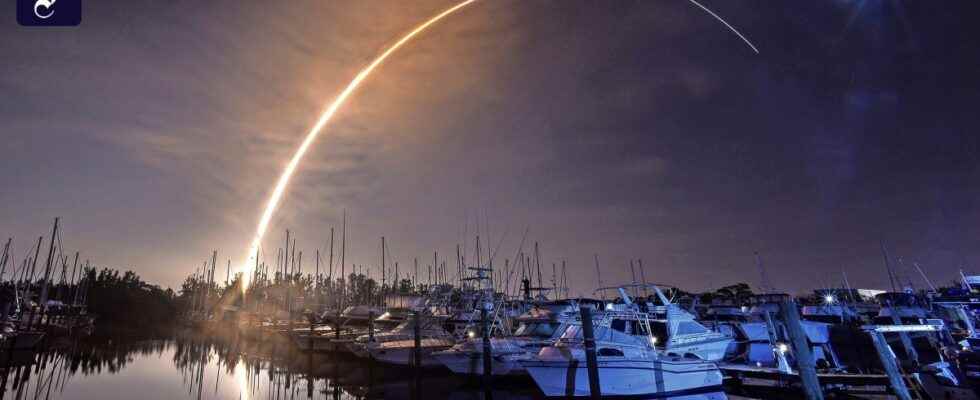EThere had been a lot of malice before and doubts again and again. Would NASA actually be able to send a large rocket to the moon again 50 years after the last manned moon landing? Because after the still unmanned heavy-duty rocket SLS, developed on the basis of space shuttle technology, had already been moved to launch pad 39 B in the Kennedy Space Center in Florida at the end of August, there were initially persistent problems, especially with hydrogen refueling, and finally two tropical storms led to new postponements of the start. At the end of last week, as soon as relevant damage to the system had been ruled out after Hurricane Nicole had subsided, it was finally said that NASA would push for a launch within a two-hour launch window on November 16th.
On Tuesday evening, launch director Charlie Blackwell-Thompson actually gave the go-ahead, and the refueling with liquid oxygen and hydrogen was also successfully completed in the hours that followed. On Wednesday morning at 7.47 a.m. (CET), the 98 meter high rocket actually rose into the Florida night sky. “Lift off from Artemis-1! We’re going up together, back to the moon and even further,” the commentator cheered in the live stream, quoting the unofficial motto of the newly launched American moon program.
Crucial contribution of Europe
In addition to other international partners, the European Space Agency ESA is also playing a key role in the programme. She created the service module for the “Orion” spaceship, which SLS has now launched on its way to the moon and is intended to take people to the moon again for the first time on the next flight – Artemis-2. In return for this central technological contribution, the Europeans will be given three slots in the Artemis program to send their own astronauts to the moon. This voucher could be redeemed on the fourth or fifth Artemis flight: ESA Director General Josef Aschbacher aims to leave European footprints on the moon by the end of the decade. On the occasion of the Artemis 1 launch, the ESA astronauts Alexander Gerst, Thomas Pesquet and Luca Parmitano already declared on Twitter their willingness to take on this task. The decision as to who may leave the historical footprint is still pending.

53 years later: The SLS rocket (right) compared to the Saturn V rocket (left) that launched Apollo 12 to the moon in 1969.
:
Image: AP
Now, as part of the Artemis-1 unmanned test mission, the Orion spacecraft will enter a distant retrograde orbit around the Moon, which will take it to within approximately 40,000 miles of interplanetary space beyond the Moon. After a journey of 26 days, it should then land back on earth. There are scientific instruments on board, including the two measurement dummies “Helga” and “Zohar” from the German Aerospace Center – two female torsos equipped with numerous sensors that are intended to help assess the effects of cosmic radiation on the bodies of female astronauts and explore without radiation protection vests. In addition, small satellites are to be released; one to help research the effects of the space environment on yeast bacteria, another to map ice on the moon. In view of the many delays, however, there is concern as to whether the batteries in all the experiments will still be able to supply enough power. That will only be judged once they have arrived in lunar orbit, NASA said.
The lunar program launched by Donald Trump in 2019 is intended to herald a new phase in astronautical exploration. From the second half of the 1920s, missions to the south pole of the moon are planned with the aim of establishing a permanent lunar station there. At the same time, NASA and ESA are working on a new space station in lunar orbit, the “Lunar Gateway”, which can serve as a starting point for missions to the lunar surface. Space expert David Parker explained in September that the development of the moon should be understood as the exploration of an eighth continent. At ESA he is responsible for the “Terrae Novae” program, which focuses on the moon as a way station on the way to Mars – just like the other major space nations do. So there is currently no lack of ambitious goals for space travel. How they can be financed, at least in Europe, will be decided next week at the ESA Council of Ministers in Paris.
